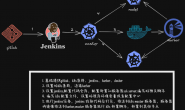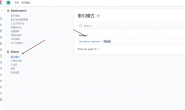spring mvc代码分析
我们都知道,spring mvc 的入口就在于 DispatcherServlet,那里面应该就有个 doDispatch 的方法
核心代码如下:
mappedHandler = this.getHandler(processedRequest);// 获取Handler HandlerAdapter ha = this.getHandlerAdapter(mappedHandler.getHandler());// 获取HandlerAdapter mv = ha.handle(processedRequest, response, mappedHandler.getHandler());// HandlerAdapter 处理,返回 ModelAndView
调用 AbstractHandlerMethodAdapter 中的如下方法:
@Nullable
public final ModelAndView handle(HttpServletRequest request, HttpServletResponse response, Object handler) throws Exception {
return this.handleInternal(request, response, (HandlerMethod)handler);
}
我们看到又调用了 handleInternal ,这是个抽象方法,会根据对应的Adapter 实现来调用。这里会调用RequestMappingHandlerAdapter#handleInternal
实现如下:
protected ModelAndView handleInternal(HttpServletRequest request, HttpServletResponse response, HandlerMethod handlerMethod) throws Exception {
this.checkRequest(request);
ModelAndView mav;
if (this.synchronizeOnSession) {
HttpSession session = request.getSession(false);
if (session != null) {
Object mutex = WebUtils.getSessionMutex(session);
synchronized(mutex) {
mav = this.invokeHandlerMethod(request, response, handlerMethod);
}
} else {
mav = this.invokeHandlerMethod(request, response, handlerMethod);
}
} else {
mav = this.invokeHandlerMethod(request, response, handlerMethod);
}
if (!response.containsHeader("Cache-Control")) {
if (this.getSessionAttributesHandler(handlerMethod).hasSessionAttributes()) {
this.applyCacheSeconds(response, this.cacheSecondsForSessionAttributeHandlers);
} else {
this.prepareResponse(response);
}
}
return mav;
}
然后调用 invokeHandlerMethod 返回 ModelAndView,最终调用的是ServletInvocableHandlerMethod#invokeAndHandle
代码如下:
public void invokeAndHandle(ServletWebRequest webRequest, ModelAndViewContainer mavContainer, Object... providedArgs) throws Exception {
Object returnValue = this.invokeForRequest(webRequest, mavContainer, providedArgs);
this.setResponseStatus(webRequest);
if (returnValue == null) {
if (this.isRequestNotModified(webRequest) || this.getResponseStatus() != null || mavContainer.isRequestHandled()) {
this.disableContentCachingIfNecessary(webRequest);
mavContainer.setRequestHandled(true);
return;
}
} else if (StringUtils.hasText(this.getResponseStatusReason())) {
mavContainer.setRequestHandled(true);
return;
}
mavContainer.setRequestHandled(false);
Assert.state(this.returnValueHandlers != null, "No return value handlers");
try {
this.returnValueHandlers.handleReturnValue(returnValue, this.getReturnValueType(returnValue), mavContainer, webRequest);
} catch (Exception var6) {
if (this.logger.isTraceEnabled()) {
this.logger.trace(this.formatErrorForReturnValue(returnValue), var6);
}
throw var6;
}
}
然后执行InvocableHandlerMethod#invokeForRequest
@Nullable
protected Object doInvoke(Object... args) throws Exception {
ReflectionUtils.makeAccessible(this.getBridgedMethod());
try {
return this.getBridgedMethod().invoke(this.getBean(), args);
} catch (IllegalArgumentException var4) {
this.assertTargetBean(this.getBridgedMethod(), this.getBean(), args);
String text = var4.getMessage() != null ? var4.getMessage() : "Illegal argument";
throw new IllegalStateException(this.formatInvokeError(text, args), var4);
} catch (InvocationTargetException var5) {
Throwable targetException = var5.getTargetException();
if (targetException instanceof RuntimeException) {
throw (RuntimeException)targetException;
} else if (targetException instanceof Error) {
throw (Error)targetException;
} else if (targetException instanceof Exception) {
throw (Exception)targetException;
} else {
throw new IllegalStateException(this.formatInvokeError("Invocation failure", args), targetException);
}
}
}
最终调用 Method 的invoke 来反射执行相关方法。当然 GET 请求和POST 请求等的处理方式是不一样的,但最终原理都是一样的。



